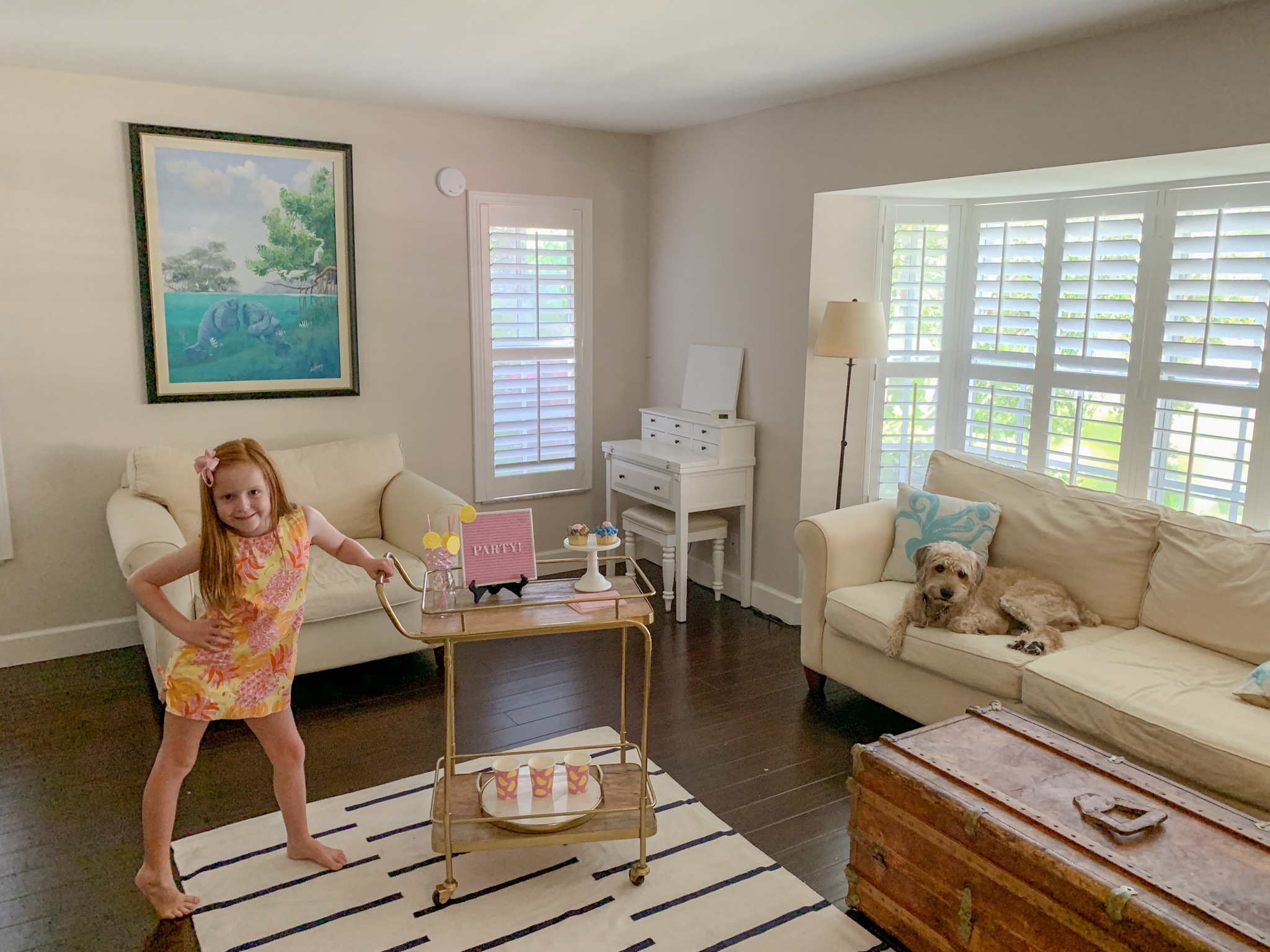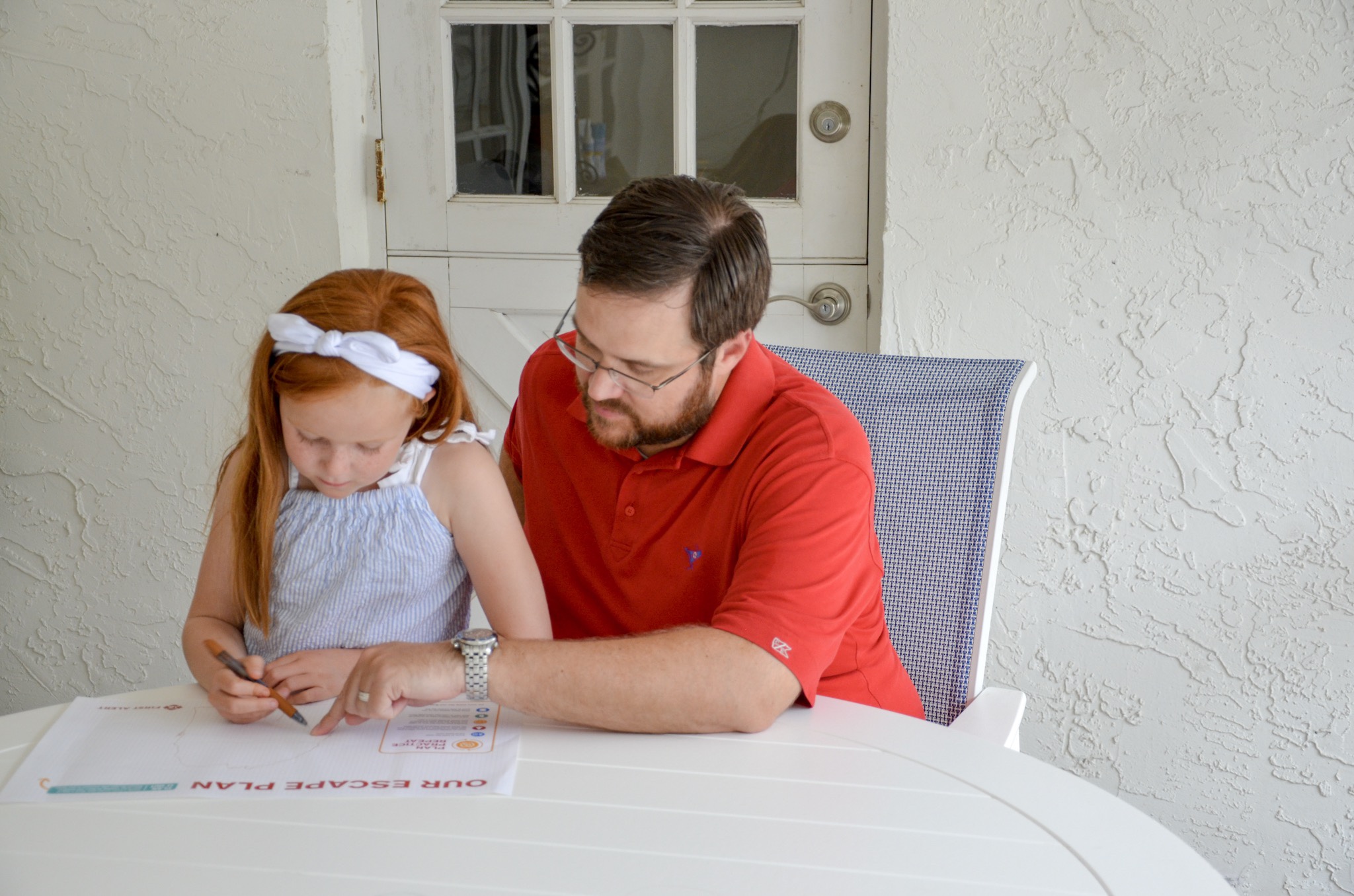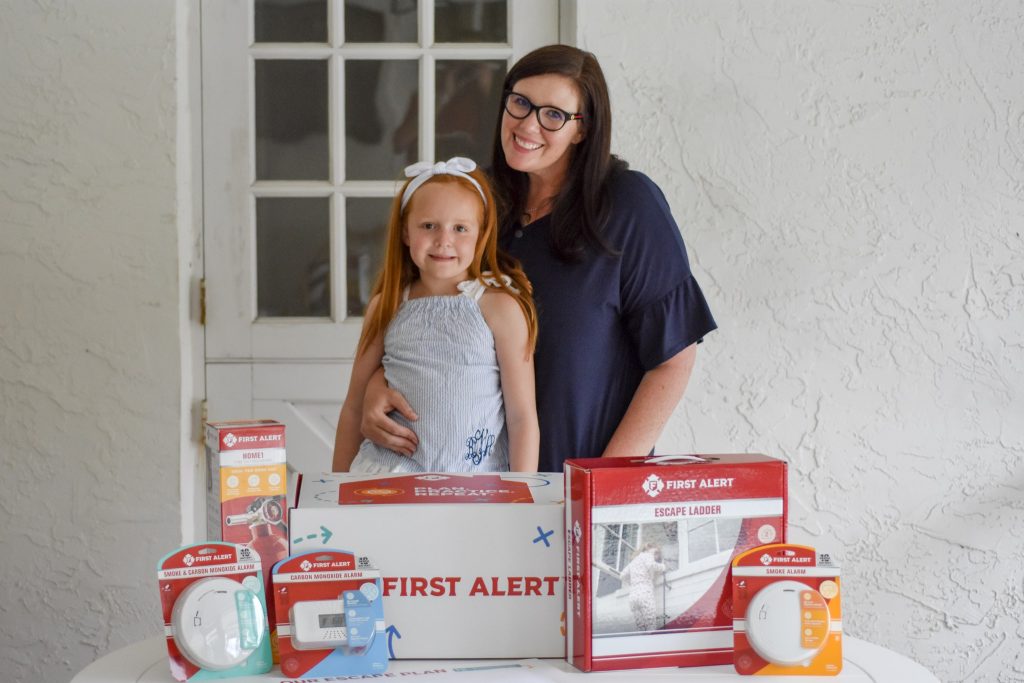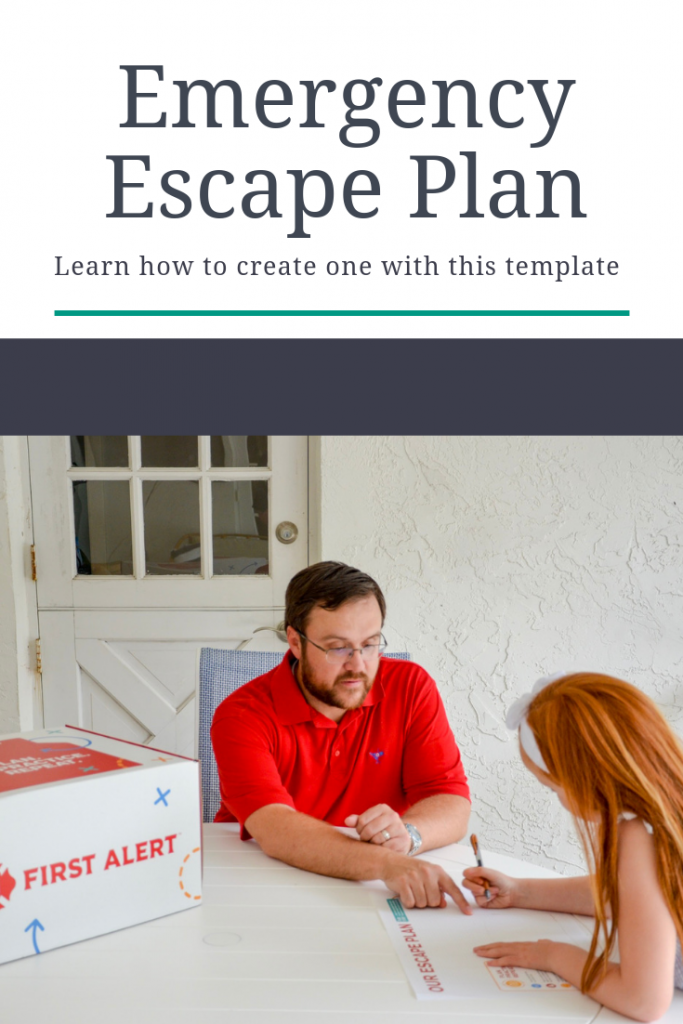Thank you First Alert for sponsoring this post. Plan, practice, and repeat your escape plan with First Alert!
There are so many reasons I am grateful for my blogging career. From a creative outlet, flexible schedule, to the amazing friends I have made there are so many benefits. One of the ones I am most grateful for are the lessons I have learned from partners. Today, I have partnered with First Alert to help you plan your emergency escape plan with your family and how to talk to your kids about fire safety.
I am surprised that this is a subject I have not researched more before today. When my mom was a kid her house burned down. She was at home sleeping. The fire started in her brother's room with an electric heater. Thank God they all got out safely.
If you do not have one yet, don't worry, you are not alone. Only 43%* of homeowners have an emergency escape plan or emergency response plan. When it comes to an emergency escape plan it is best to remember - plan. practice. repeat. You should not only have an emergency escape plan that everyone knows, but you also need to practice it at least twice a year. This is essential so in the event of a fire safety emergency everyone knows how to get out safely.
Have you spoken to your kids about fire safety? We have depended on school to do this. And we are not alone. Only 33%* of homeowners have discussed fire safety with their children. These lessons need to include the importance of alarms, testing alarms, and what to do if there is an emergency.
How to Create an Emergency Escape Plan
If you were to have a fire in your home. Every second counts. Our city puts on some great educational exhibit where they have a model family room and they show just how quickly the fire moves from curtains, to couches and the rugs. According to the National Fire Protection Association, after you hear a smoke alarm (assuming you have them in good working order) you may have less than two minutes to escape safely. Hence why planning and practicing an escape route with your family is so important.
Make an Emergency Escape Plan:
- Find at least two exists out of each room in your home. Note if any of the exits, doors and windows, are blocked make sure you clear them so you could use them if necessary. If you have a 2-story home, you may want to buy escape ladders for upstairs rooms. Use this home escape plan worksheet to draw a map of your home and the exits.
- If you have small children determine who would be responsible for getting them outside.
- Pick a meeting place outside, like a tree, light pole or your mailbox. Your meeting spot outside should be a safe distance from your home, you could make the meeting place at a neighbor's home too.
- Practice your emergency escape plan during the day and at night at least twice a year so your family is prepared. Make sure you teach your children (if old enough) how to escape too just in case you are unable to get it them to help. After we made our plan I showed B how to open the windows in her bedroom. Everyone should know to close doors behind you as you leave to help contain the fire.
- Ensure your street address can be seen from the street for first responders and that your kids know their address.
- Once you are at your meeting spot ensure kids know how to call 911.
When to use your Escape Plan
If the Smoke Alarms Sound:
- Follow your family’s escape plan.
- Remember smoke rises so get down low below the smoke.
- As you are leaving close doors to slow the fire from spreading.
- Once you and your family are out, it is essential that you stay out of your home! If someone is missing have a fire fighter assist you when they arrive.
- Call 9-1-1 when you are at your meet up location.
Fire Safety Products
Smoke alarms and carbon monoxide monitors are just as important as your family's escape route. We love having a gas stove, but the danger of carbon monoxide made me nervous when we first bought our home. Smoke detectors and carbon monoxide monitors alert your family of a potential danger. Now is a great time to take inventory of where you have smoke alarms installed. They should be in the following places:
- every bedroom
- hallways outside of bedrooms
- on each floor of your home
Be sure to test them monthly. If you have a standard smoke alarm set a reminder to replace the batteries every six months. We are happy to have updated to 10-year sealed battery alarms, so you do not need to replace the batteries. If an emergency arises you and your family may just minutes to escape so plan, practice and repeat your escape route to help protect what matters most.
Learn more about Fire Safety here.
Pin for Later: How to Create an Emergency Escape Plan with First Alert
*Source: First Alert Research Report, June 2016 - Results are based on the responses of 1,000+ adult homeowners, ages 25 and older, living in the United States.









Leave a Reply